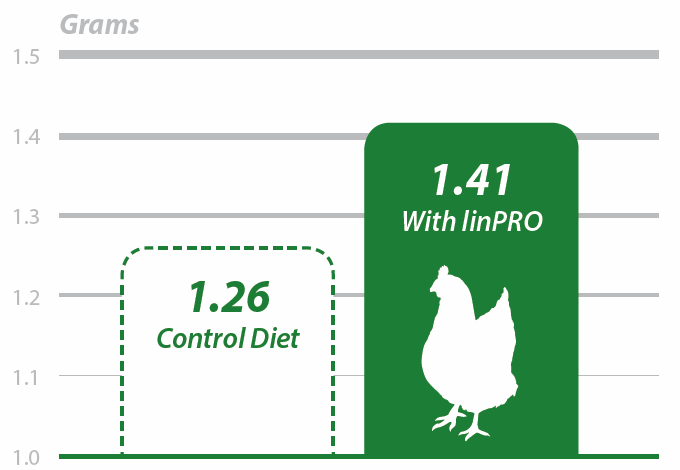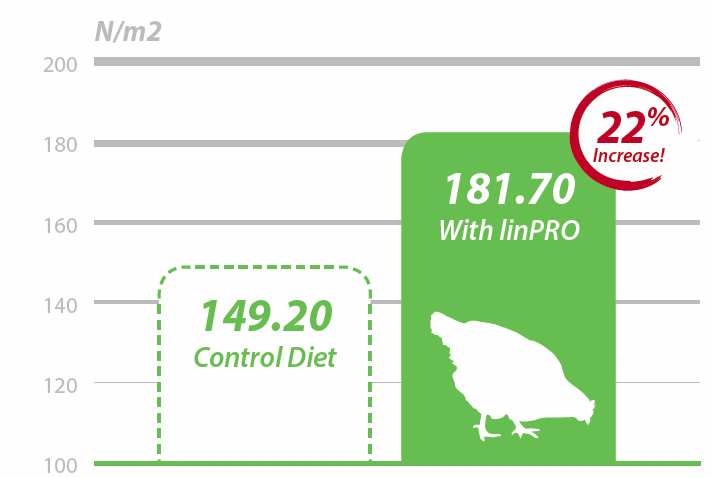May 2020
Breeder feeding strategies including linPRO show promise for improving skeletal integrity of pullets.
Skeletal integrity throughout the life cycle of a laying hen is a critical factor in ensuring bird welfare and flock performance.
With growing numbers of cage-free production systems, the incidence of skeletal related injuries has risen and quickly become one of the major welfare challenges faced by industry today.
In response to these challenges, several research studies have focused on developing strategies to improve overall skeletal health of poultry.
Bone development occurs early in life. Recent pullet-focused research studies have evaluated different nutritional supplementation strategies on long-term bone health in laying hens. However, the pullet phase may not be early enough in the bird’s life to elicit the desired physiological changes.
Maternal feeding strategies continue to be evaluated for their impact on metabolic status, and physiological development during the embryonic period and with the potential for longer term trans-generational effects on performance and health.
Omega-3 fatty acids are well known for their health benefits; however, these polyunsaturated fats may also impact bone development.
The mechanism by which omega-3 fatty acid may modify bone metabolism is believed to be through their ability to regulate prostaglandin hormones and inflammatory cytokines.
In collaboration with the University of Guelph’s Dr. Elijah Kiarie, a research study was conducted to investigate the potential impacts of feeding linPRO to pullet breeders and their progeny of skeletal development.
Results from this study reported increased tibia breaking strength and cortical ash content in 12-week old shaver white pullets when the breeder diets contained linPRO at 2.6% of the diet.
“The results demonstrated effectiveness of maternal and post-hatch feeding of omega-3 fatty acid in support of skeletal strength in young pullets which can greatly reduce poor egg shell quality and skeletal maladies seen in laying hens across all housing types.The potential of omega-3 fatty acids in stimulating bone, brain, and immune cells development at embryonic through to early phases of the chick’s life could significantly improve productivity and welfare.”
– Dr. Elijah Kiarie, Assistant Professor in Poultry Nutrition at the University of Guelph


At 18 weeks of age, there was no reported increase in tibia breaking strength when comparing pullets fed a control diet and originating from either a linPRO fed maternal hen or a control fed maternal hen. However, an 8% increase was observed in pullets fed linPRO compared to pullets fed the control diet. These results were further improved when the pullets fed linPRO originated from breeder hens who were also fed linPRO.
Based on the data reported in this study, it was concluded that feeding omega-3 fatty acids to both breeders and progeny was an effective feeding strategy in supporting structural bone in Shaver White pullets.
Complete details of this study have been published in Poultry Science and are available online through the following citation link: https://doi.org/10.1016/j.psj.2019.12.016
Last Updated: May 20, 2020





